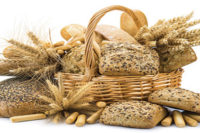Staying sharp with omegas and antioxidants

 It may seem that omegas and antioxidants have always been top of mind for consumers and researchers. Since the 1990s, when scientists revealed the strong connection between low antioxidant intake and chronic conditions, consumer diets have shifted toward higher antioxidant and omega consumption. But despite heightened awareness, consumers remain generally unaware of the many food sources containing these valuable molecules.
It may seem that omegas and antioxidants have always been top of mind for consumers and researchers. Since the 1990s, when scientists revealed the strong connection between low antioxidant intake and chronic conditions, consumer diets have shifted toward higher antioxidant and omega consumption. But despite heightened awareness, consumers remain generally unaware of the many food sources containing these valuable molecules.
Omegas, or fatty acids, are essential for a number of the body’s functions, but our bodies don’t produce them naturally, so we must consume them. These fatty acids not only aid our systems, they also protect us against heart disease and stroke. As awareness of these nutrients’ role in the fight against heart disease, cancer and other chronic conditions grows, more supplements and foods touted as being rich in antioxidants are appearing on store shelves.
But in an era where convenience is king, supplements may seem the easier way for consumers to take in an optimum amount of antioxidants and omegas. Furthermore, consumers on restrictive, low-calorie weight-loss plans—often women of childbearing age—may not be able to reach the recommended amounts of antioxidants their bodies need. Supplements can certainly step in as an easy alternative, yet they have also become a continued source of controversy and debate.
Some studies indicate that omegas and antioxidants in pill form may provide no health benefits at all and may even result in death. Others show that whole foods are simply a better source. Regardless of the studies and evidence, nearly 20% of Americans and Europeans take supplements daily for their dose of omegas and antioxidants, according to Duke Medicine. But studies show consuming the nutrients by themselves may not be as beneficial as pairing them with other components naturally found in whole grains and vegetables, for example.
While supplements may satisfy the needs of some consumers, the market for functional foods and beverages has also grown steadily and is predicted to continue growing for years to come. In fact, according to research conducted by Packaged Facts, when consumers were asked what they look for when trying to eat more healthfully, omega-3 ranked third among participant responses.
The fortification factor
Along with supplements and foods that naturally provide these beneficial molecules, the food industry is tapping into fortified products. In 2011, U.S. retail sales of food and drink products making omega-3 claims shot up 11%. As consumers become more aware of the benefits of omegas and look for more ways to consume them, the market is predicted to grow by another 40%, to reach $7 billion by 2015.
Contrary to past forecasts, experts now expect the use of antioxidants and omegas to become among the biggest food trends in the next five to 10 years. This is a rich opportunity for the food industry to continue developing innovative products that impart the benefits of foods with naturally occurring antioxidants and omegas.
Only in the past five years has research surfaced that indicates whole-grain products offer high fiber content and are packed with polyphenol antioxidants. In fact, it’s estimated that a well-planned diet containing the recommended amount of whole grains can account for approximately 10% of a person’s recommended daily antioxidant intake. Additionally, whole-wheat products also contain trace amounts of omega-3 fatty acids, which improve brain function.
As more new developments regarding omegas and antioxidants come into being, the Grain Foods Foundation (GFF) continues to review the latest studies surrounding this topic. Likewise, GrainsforYourBrain.org acts as both a resource and outlet for our Scientific Advisory Board to share research and professional opinions on omegas and antioxidants.
Looking for a reprint of this article?
From high-res PDFs to custom plaques, order your copy today!





